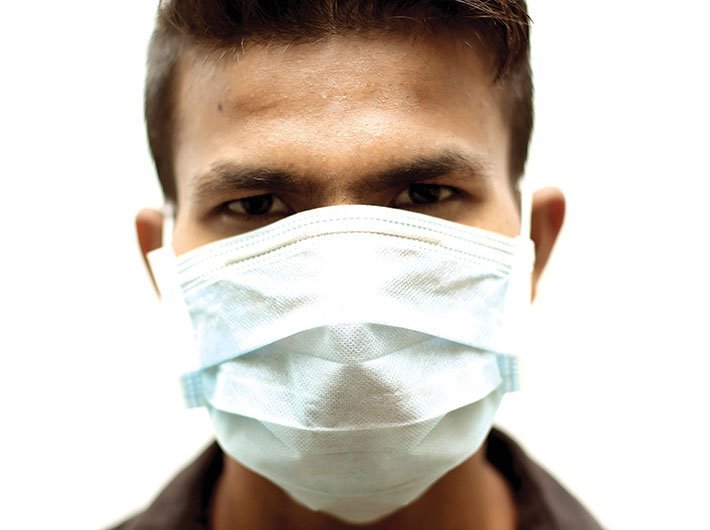The budget envelope for TB in India was substantially increased in 2017 to $525 million, almost double the level of 2016
India has one of the highest numbers of TB cases in the world, a World Health Organisation (WHO) report has said.
An estimated 10.4 million people fell ill with TB in 2016: 90% were adults, 65% were male, 10% were people living with HIV (74% in Africa) and 56% were in five countries: India, Indonesia, China, the Philippines and Pakistan, the report said.
The latest picture is one of a still high burden of disease, and progress that is not fast enough to reach targets or to make major headway in closing persistent gaps. TB is the ninth leading cause of death worldwide and the leading cause from a single infectious agent, ranking above HIV/AIDS. In 2016, there were an estimated 1.3 million TB deaths among HIV-negative people (down from 1.7 million in 2000) and an additional 374 000 deaths among HIV-positive people.
“An estimated 10.4 million people fell ill with TB in 2016: 90% were adults, 65% were male, 10% were people living with HIV (74% in Africa) and 56% were in five countries: India, Indonesia, China, the Philippines and Pakistan.3 Drug-resistant TB is a continuing threat. In 2016, there were 600 000 new cases with resistance to rifampicin (RRTB), the most efective first-line drug, of which 490 000 had multidrug-resistant TB (MDR-TB). Almost half (47%) of these cases were in India, China and the Russian Federation,” said the Global Tuberculosis Report 2017.
Globally, the TB mortality rate is falling at about 3% per year. TB incidence is falling at about 2% per year and 16% of TB cases die from the disease; by 2020, these figures need to improve to 4–5% per year and 10%, respectively, to reach the first (2020) milestones of the End TB Strategy. Most deaths from TB could be prevented with early diagnosis and appropriate treatment. Millions of people are diagnosed and successfully treated for TB each year, averting millions of deaths (53 million 2000–2016), but there are still large gaps in detection and treatment.
Read: How caregivers are falling prey to Tuberculosis
In 2016, 6.3 million new cases of TB were reported (up from 6.1 million in 2015), equivalent to 61% of the estimated incidence of 10.4 million; the latest treatment outcome data show a global treatment success rate of 83%, similar to recent years. There were 476 774 reported cases of HIV-positive TB (46% of the estimated
incidence), of whom 85% were on antiretroviral therapy (ART). A total of 129 689 people were started on treatment for drug-resistant TB, a small increase from 125 629 in 2015 but only 22% of the estimated incidence; treatment success remains low, at 54% globally. Making large inroads into these gaps requires progress in a particular subset of high TB burden countries.
The report went on to say that ten countries accounted for 76% of the total gap between TB incidence and reported cases; the top three were India (25%), Indonesia (16%) and Nigeria (8%).
Ten countries accounted for 75% of the incidence-treatment enrolment gap for drug-resistant TB; India and China accounted for 39% of the global gap.6 Most of the gaps related to HIV-associated TB were in the WHO African Region. TB preventive treatment is expanding, especially in the two priority risk groups of people living with HIV and children under 5. However, most people eligible for TB preventive treatment are not accessing it. Financing for TB care and prevention has been increasing for more than 10 years, but funding gaps still exist ($2.3 billion in 2017).
Total health spending also falls short of the resources needed to achieve universal health coverage. Closing these gaps requires more resources from both domestic sources (especially in middle-income countries) and international donors (especially in low-income countries). Broader influences on the TB epidemic include levels of poverty, HIV infection, undernutrition and smoking, said the report.
About 82% of TB deaths among HIV-negative people occurred in the WHO African Region and the WHO South-East Asia Region in 2016; these regions accounted for 85% of the combined total of TB deaths in HIV-negative and HIV-positive people. India accounted for 33% of global TB deaths among HIV-negative people, and for 26% of the combined total of TB deaths in HIV-negative and HIV-positive people.
India stood out as a country in which the budget envelope for TB was substantially increased in 2017 (to US$ 525 million, almost double the level of 2016), following political commitment from the Prime Minister to the goal of ending TB by 2025. The budget is fully funded, including US$ 387 million (74%) from domestic sources (triple the amount of US$ 124 million in 2016) and the remainder (26%) from international donor sources.
In India, multiple sources of evidence from surveys and surveillance show large underreporting of detected TB cases, especially in the private sector, the report said.
Read: When TB numbers go out of count


